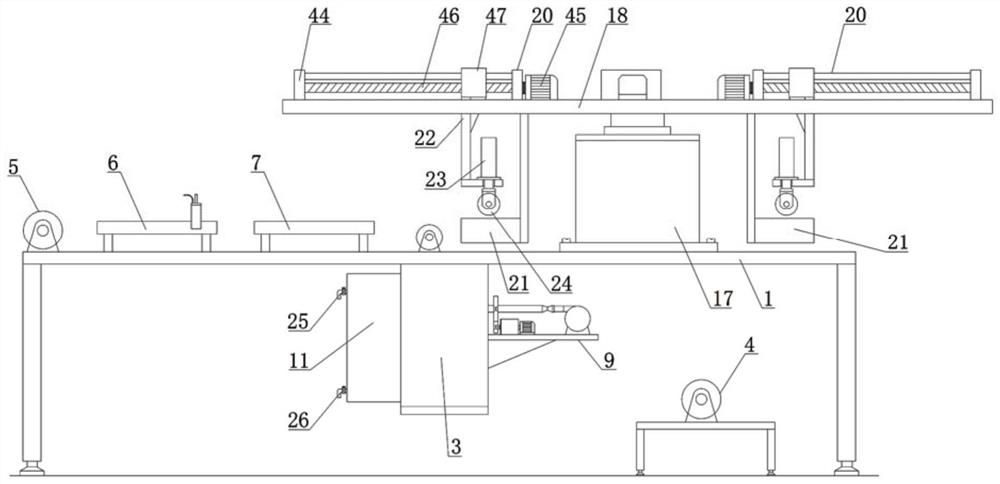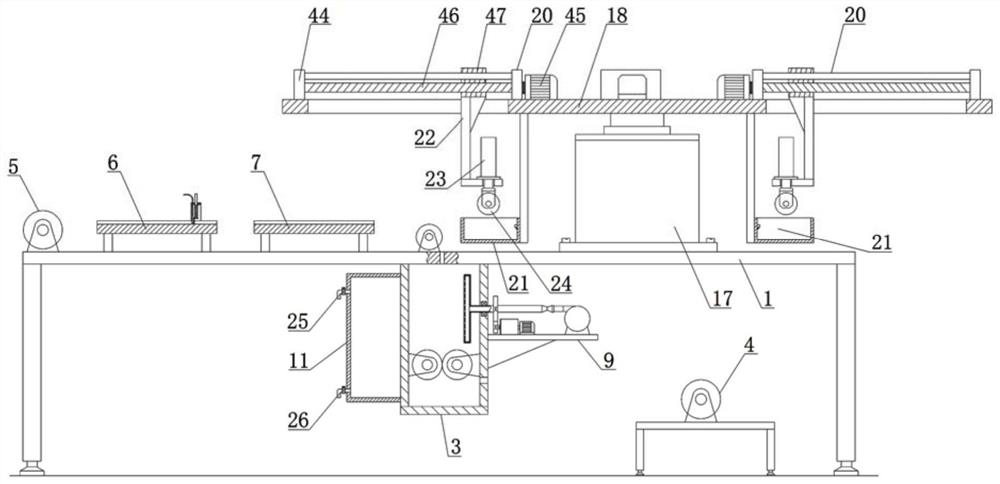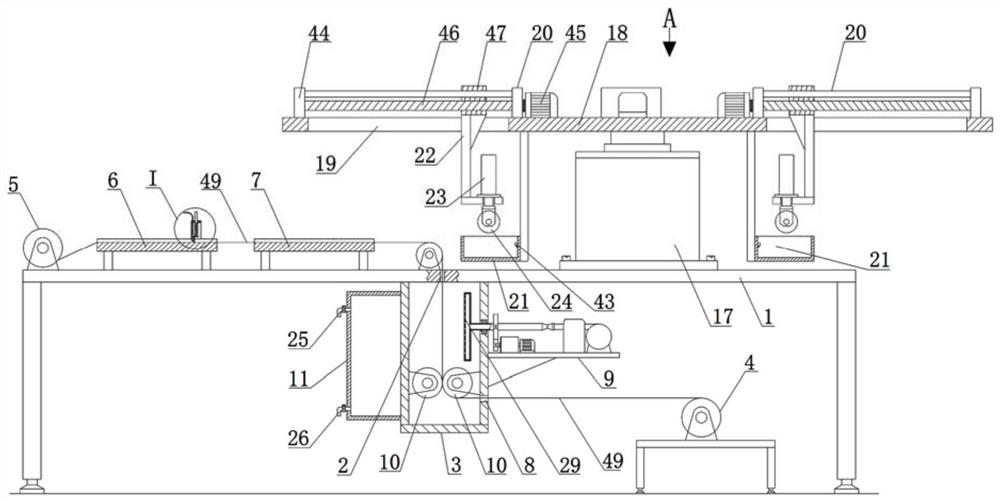Textile fabric multi-color printing and dyeing production line for textile processing
A multi-color, production line technology, applied in the field of textile processing, can solve the problems of lowering printing and dyeing quality, increasing temperature, and inability to continuously imprint different colors of pigments, so as to improve the printing and dyeing quality and avoid pitting.
- Summary
- Abstract
- Description
- Claims
- Application Information
AI Technical Summary
Problems solved by technology
Method used
Image
Examples
Embodiment Construction
[0038] The present invention will be further described below in conjunction with accompanying drawing, protection scope of the present invention is not limited to the following:
[0039] Such as Figure 1-11 As shown, a multi-color printing and dyeing production line for textile fabrics for textile processing, which includes a workbench 1, a vertical groove 2 set on the workbench 1, an oven 3 arranged below the vertical groove 2, and an oven 3 arranged below the workbench 1. The winding device 4, the unwinding device 5, the left conveying platform 6, the right conveying platform 7 and the printing and dyeing mechanism, which are fixed on the table top of the workbench 1 and arranged in sequence from left to right, the left conveying platform 6 and the right conveying platform On the top surface of conveying platform 7 and be positioned at its front and back side all be provided with limiting plate, limiting plate is used for preventing textile cloth from falling from the table...
PUM
 Login to View More
Login to View More Abstract
Description
Claims
Application Information
 Login to View More
Login to View More - R&D
- Intellectual Property
- Life Sciences
- Materials
- Tech Scout
- Unparalleled Data Quality
- Higher Quality Content
- 60% Fewer Hallucinations
Browse by: Latest US Patents, China's latest patents, Technical Efficacy Thesaurus, Application Domain, Technology Topic, Popular Technical Reports.
© 2025 PatSnap. All rights reserved.Legal|Privacy policy|Modern Slavery Act Transparency Statement|Sitemap|About US| Contact US: help@patsnap.com



